Martin Byung-Guk Jun
School of Mechanical Engineering, Purdue University
LISTEN: Lightweight Industrial Sound-representable Transformer for Edge Notification
Jul 10, 2025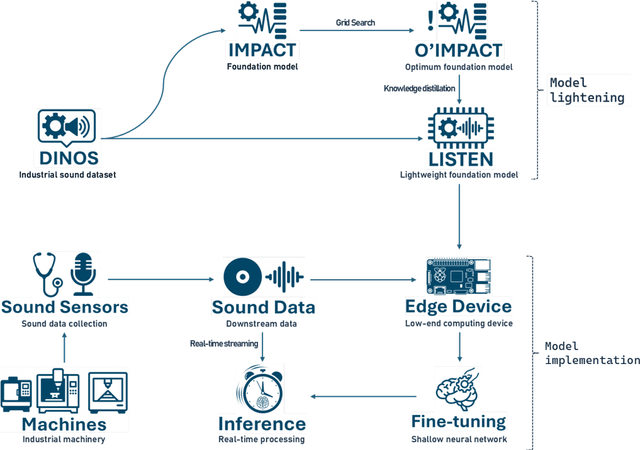

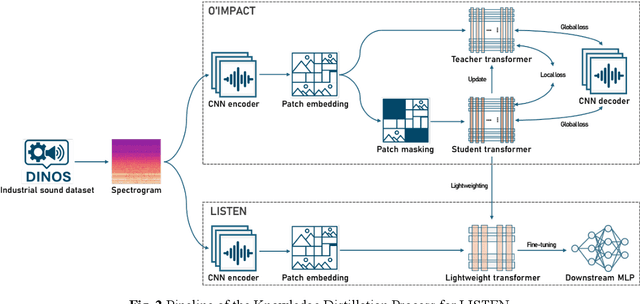
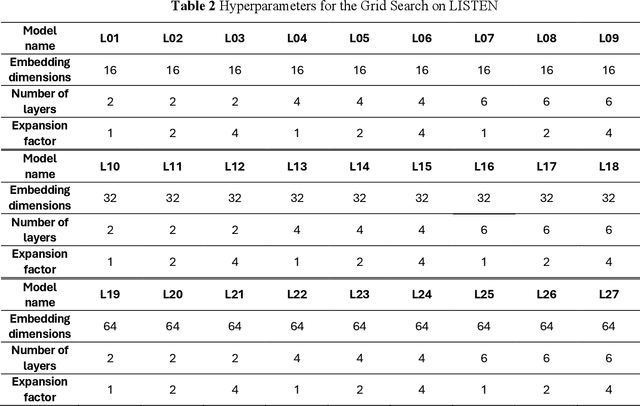
Abstract:Deep learning-based machine listening is broadening the scope of industrial acoustic analysis for applications like anomaly detection and predictive maintenance, thereby improving manufacturing efficiency and reliability. Nevertheless, its reliance on large, task-specific annotated datasets for every new task limits widespread implementation on shop floors. While emerging sound foundation models aim to alleviate data dependency, they are too large and computationally expensive, requiring cloud infrastructure or high-end hardware that is impractical for on-site, real-time deployment. We address this gap with LISTEN (Lightweight Industrial Sound-representable Transformer for Edge Notification), a kilobyte-sized industrial sound foundation model. Using knowledge distillation, LISTEN runs in real-time on low-cost edge devices. On benchmark downstream tasks, it performs nearly identically to its much larger parent model, even when fine-tuned with minimal datasets and training resource. Beyond the model itself, we demonstrate its real-world utility by integrating LISTEN into a complete machine monitoring framework on an edge device with an Industrial Internet of Things (IIoT) sensor and system, validating its performance and generalization capabilities on a live manufacturing shop floor.
IMPACT: Industrial Machine Perception via Acoustic Cognitive Transformer
Jul 09, 2025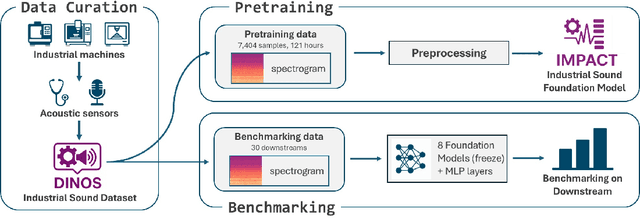



Abstract:Acoustic signals from industrial machines offer valuable insights for anomaly detection, predictive maintenance, and operational efficiency enhancement. However, existing task-specific, supervised learning methods often scale poorly and fail to generalize across diverse industrial scenarios, whose acoustic characteristics are distinct from general audio. Furthermore, the scarcity of accessible, large-scale datasets and pretrained models tailored for industrial audio impedes community-driven research and benchmarking. To address these challenges, we introduce DINOS (Diverse INdustrial Operation Sounds), a large-scale open-access dataset. DINOS comprises over 74,149 audio samples (exceeding 1,093 hours) collected from various industrial acoustic scenarios. We also present IMPACT (Industrial Machine Perception via Acoustic Cognitive Transformer), a novel foundation model for industrial machine sound analysis. IMPACT is pretrained on DINOS in a self-supervised manner. By jointly optimizing utterance and frame-level losses, it captures both global semantics and fine-grained temporal structures. This makes its representations suitable for efficient fine-tuning on various industrial downstream tasks with minimal labeled data. Comprehensive benchmarking across 30 distinct downstream tasks (spanning four machine types) demonstrates that IMPACT outperforms existing models on 24 tasks, establishing its superior effectiveness and robustness, while providing a new performance benchmark for future research.
Adversarial Domain Adaptation for Metal Cutting Sound Detection: Leveraging Abundant Lab Data for Scarce Industry Data
Oct 23, 2024
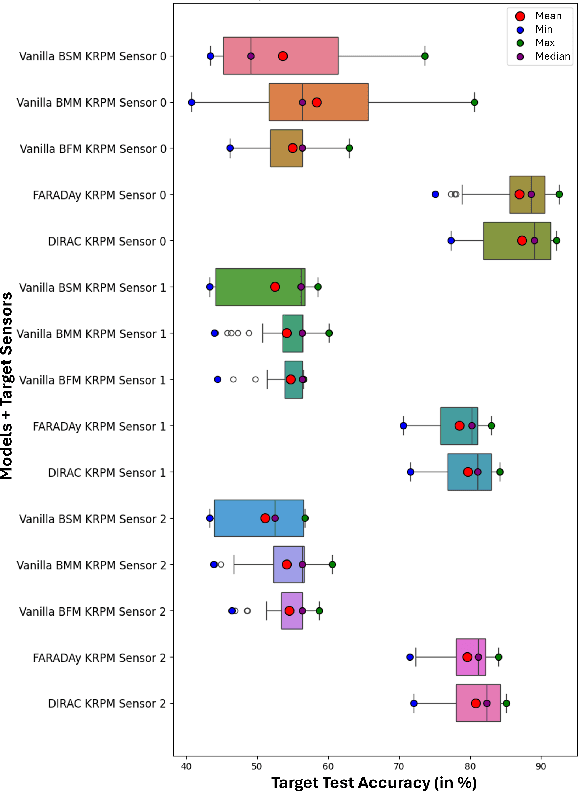
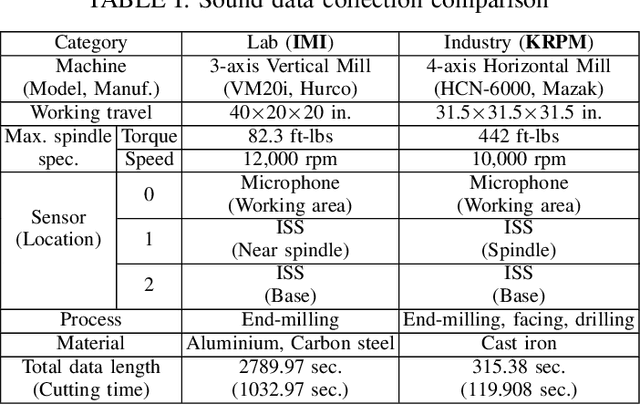

Abstract:Cutting state monitoring in the milling process is crucial for improving manufacturing efficiency and tool life. Cutting sound detection using machine learning (ML) models, inspired by experienced machinists, can be employed as a cost-effective and non-intrusive monitoring method in a complex manufacturing environment. However, labeling industry data for training is costly and time-consuming. Moreover, industry data is often scarce. In this study, we propose a novel adversarial domain adaptation (DA) approach to leverage abundant lab data to learn from scarce industry data, both labeled, for training a cutting-sound detection model. Rather than adapting the features from separate domains directly, we project them first into two separate latent spaces that jointly work as the feature space for learning domain-independent representations. We also analyze two different mechanisms for adversarial learning where the discriminator works as an adversary and a critic in separate settings, enabling our model to learn expressive domain-invariant and domain-ingrained features, respectively. We collected cutting sound data from multiple sensors in different locations, prepared datasets from lab and industry domain, and evaluated our learning models on them. Experiments showed that our models outperformed the multi-layer perceptron based vanilla domain adaptation models in labeling tasks on the curated datasets, achieving near 92%, 82% and 85% accuracy respectively for three different sensors installed in industry settings.
An FEA surrogate model with Boundary Oriented Graph Embedding approach
Aug 30, 2021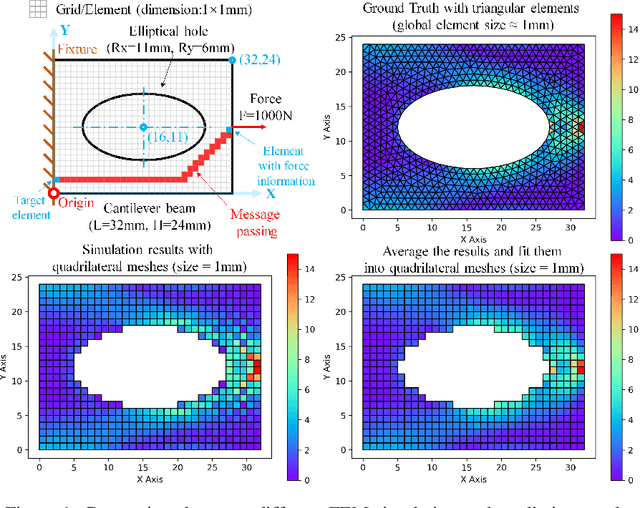

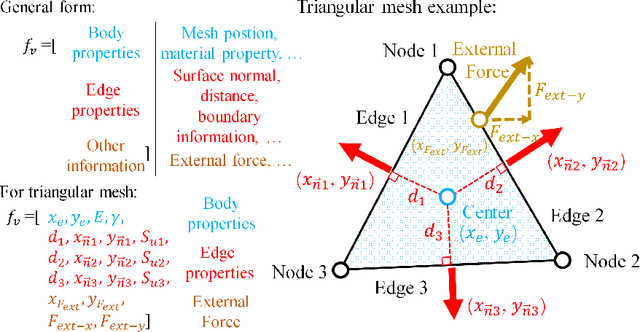

Abstract:In this work, we present a Boundary Oriented Graph Embedding (BOGE) approach for the Graph Neural Network (GNN) to serve as a general surrogate model for regressing physical fields and solving boundary value problems. Providing shortcuts for both boundary elements and local neighbor elements, the BOGE approach can embed structured mesh elements into the graph and performs an efficient regression on large-scale triangular-mesh-based FEA results, which cannot be realized by other machine-learning-based surrogate methods. Focusing on the cantilever beam problem, our BOGE approach cannot only fit the distribution of stress fields but also regresses the topological optimization results, which show its potential of realizing abstract decision-making design process. The BOGE approach with 3-layer DeepGCN model \textcolor{blue}{achieves the regression with MSE of 0.011706 (2.41\% MAPE) for stress field prediction and 0.002735 MSE (with 1.58\% elements having error larger than 0.01) for topological optimization.} The overall concept of the BOGE approach paves the way for a general and efficient deep-learning-based FEA simulator that will benefit both industry and design-related areas.
 Add to Chrome
Add to Chrome Add to Firefox
Add to Firefox Add to Edge
Add to Edge